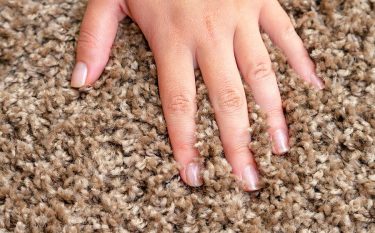- Embracing Electric Blankets
Electric blankets come in two primary types, both offering excellent and economical heating options. The first resembles a standard bed sheet, fitting snugly over your mattress and warming your bed from below. Most come with adjustable heat settings and timers for a restful night’s sleep. The second type resembles a typical blanket and can be used on your bed, sofa, or even at your desk. With adjustable temperature and duration settings, you can stay warm wherever you are. Despite requiring a power source, electric blankets are surprisingly cost-effective, especially when compared to the expense of running central heating. As of April 2022, using an electric blanket costs approximately 23p per night (based on eight hours of use), or around 3p per hour. To further reduce costs, consider blankets with variable heat settings, dual controls, and temperature sensors that automatically turn off when a specific temperature is reached.
- Enhancing Warmth with Rugs and Soft Furnishings
Rugs serve as excellent heat-trapping furnishings that help maintain warmth within your student home. They are particularly valuable in homes without carpets or in older properties with limited insulation. Since cold air tends to rise from the bottom of the house, placing a rug forms a barrier that prevents air from lowering your home’s temperature. Opt for thick felt rugs and rug pads, preferably with a tog rating between one and two. Another clever hack for homes with minimal insulation is hanging blankets on the walls. These blankets not only retain warm air but also minimize crucial heat loss. Plus, they offer a unique and stylish way to decorate your student room and home.
- Cling Film for Window Insulation
One of the most cost-effective heating solutions is insulating your windows with cling film. In homes without double glazing, colder spells can be particularly harsh due to increased cold air intake and heat loss. Cling film provides a budget-friendly way to add an extra layer of insulation to drafty windows. It traps a small layer of air, effectively preventing warmth from escaping. Application is straightforward: clean the window, measure the cling film, ensure the window is slightly damp, and then apply the film while smoothing out any air bubbles.
- Draught Excluder for Cozier Spaces
Draught excluders do exactly what their name suggests – they prevent cold draughts and help maintain warm air within your home. Strategically place them by front or back doors, large windows, or any areas where you typically feel a breeze. You can also position them by internal doors and adjust specific radiators. This effectively isolates the heat, containing it in one room and reducing your bills as you won’t need to heat unused parts of the house. You can find a quality draught excluder for around £10, or get creative and craft your own using old jeans, jumpers, or bedding.
- Radiators: Ensuring Efficient Heating
Before the colder months set in, it’s important to make sure your radiators are in optimal working condition. Faulty radiators can lead to extended heating times to reach a comfortable temperature, resulting in higher gas or electric bills. If you notice any cold spots on the radiator or find some aren’t functioning properly, promptly inform your landlord and request professional assistance to address the issue.
- Natural Sunlight as a Heating Aid
While it might be tempting to keep blinds or curtains closed all day to retain warmth, on sunnier days, letting natural sunlight in can actually help heat your home on a budget. The sun naturally warms the room and its contents, creating a lasting sense of warmth. By evening, when you close the curtains, your home will be snug and well-heated.
- Furniture Arrangement for Efficient Heating
Winter presents an excellent opportunity for a bit of redecorating, not just for aesthetic reasons but also for practical purposes. Pulling furniture away from radiators ensures there’s ample space around them for effective heating. This allows warm air to circulate more freely, making your home much more comfortable. Avoid placing sofas or beds directly in front of radiators, as they can obstruct heat circulation, leading to colder rooms and unnecessary heating expenses. Prolonged obstruction can even disrupt the overall heat flow within your home.
Remember, implementing these practical tips can significantly enhance the warmth and comfort of your living space without straining your budget. By adopting these cost-effective heating solutions, you can enjoy a snug and cozy home throughout the winter months.


